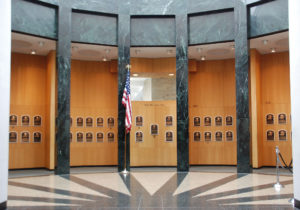
Over the last two years, the baseball Hall of Fame has welcomed six new members. Unfortunately, that has done little to take care of the backlog of candidates who deserve to be enshrined. What’s worse is that each year, more deserving players are added to the mix. 2017 will be no different with 15 returning players and 19 new additions. Oh, and it’s not going to get any easier with Chipper Jones and Jim Thome becoming eligible in 2018 while Mariano Rivera, Roy Halladay, and Todd Helton will be eligible the following year. All of these players – and there are more – should be given a great deal of consideration with Jones and Rivera deserving of immediate inclusion into Cooperstown.
Clearly, it is passed time to thin the herd. Outfield Fly Rule has asked for my ballot and I am more than happy to provide it. With 34 potential candidates, there is some effort to whittle this ballot to ten total selections, but it must be done.
Disclaimer: I look at the steroid/PED argument in two ways. One, did the player in question actually fail tests? Whether or not steroids actually help a player remains a debate and one I’m not interested in having. However, if you broke the rules, I will hold that against you. Second, is his case borderline? I treat steroids in much the same way park and league factors must be weighed in. Without the assist, are you a Hall of Fame player? If the answer to this question is yes, then a positive test on steroids can disqualify you in my opinion. If your case isn’t borderline, I will take any positive drug tests into account, but by themselves, it will not disqualify you. My rationale is that if you did not receive a lifetime ban, I will consider your qualifications. That’s how I view the “Roids” era.
Now, onto the main attraction. The candidates.
One-and-done: Casey Blake, Pat Burrell, Orlando Cabrera, Mike Cameron, J.D. Drew, Carlos Guillen, Derrek Lee, Melvin Mora, Arthur Rhodes, Freddy Sanchez, Matt Stairs, Jason Varitek, Tim Wakefield.
While good players, none of the above are deserve to return on next year’s ballot for future consideration.
Worth a thought: Magglio Ordonez, Jorge Posada, Edgar Renteria.
This small group includes a trio of players I do hope last a little longer than a year. They may not be Hall of Fame players, but they were elite at their position and deserve more recognition than the previous group. Perhaps in leaner years where the ballot isn’t so stacked – provided that ever happens again – we might be able to look at players like Ordonez and Posada with a little more focus.
With a limit of just ten possible candidates, the next group of eight players were the final cuts on my ballot. In most cases, the following players have a reasonable argument for induction, but aren’t slam-dunk choices. In one particular case, I am letting my personal feeling outweigh my analytical side for a year. My hope is that seven of these eight remain on the ballot for another year so I can look at them again. The only exception is a player entering his final year of consideration.
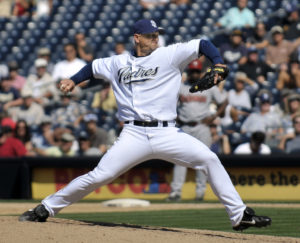
Trevor Hoffman, Lee Smith, and Billy Wagner – Saves don’t impress me. There, I said it. With the relative youth in the closer position, we do not yet know what is considered a historic amount of saves and what is simply a good career. For example, we know that 500 homeruns means something. Same idea with 3,000 hits. But will 500 saves be something of significant value in ten years? How can one know when, unlike most stats, there is not a hundred-plus years of data to put save numbers into context. Since 1990, five different pitchers have held the career saves title – including both Smith and Hoffman. Who’s to say that the current career saves title will not be broken yet another time or two in the next 15-20 years? Is it fair to hold a lack of historical context against the three pitchers I grouped together? No, it’s really not. However, whereas I like to compare a player’s worthiness for induction against both his peers and history, I can only compare the former with this group. Of the three, Wagner was the most dominant while Hoffman had the greatest longevity. The problem is they happened to play at a time that someone was truly placing himself in a class all by himself and redefining what it means to be elite as a closer. Because of that, when Mariano Rivera becomes eligible for induction in 2019, he’ll be on my ballot. He set the accepted bar of greatness at his position that all others are compared to. As Hoffman and Wagner’s peer, Rivera’s accomplishments put this trio into further context. Not only are Mo Rivera’s numbers noticeably better during the regular season, he shined in October where Wagner (13 ER in 11.2 postseason innings) and Hoffman (2 blown saves in 6 opportunities) did not. Smith’s case may deserve a little more analysis because he will drop off the ballot this year, but like a number of early closers, his numbers pale in comparison to those that came after him. That’s not fair to Smith, but also not surprising because the closer role has become more specialized since he retired.
Jeff Kent – It is kind of shocking that Kent has received so little consideration for the Hall of Fame. Last year, in his third year of eligibility, Kent finished at a three-year high when he received just 16.6% of the vote. This is despite being at the forefront of using blood tests to find HGH users. One would think that would help Kent since voters penalize players under the suspicion they may have used performance-enhancing drugs. Kent’s weak support may also be baffling when you consider his 351 homeruns as a second baseman is the most in history. Over the last decade, a pair of Kent’s peers at second base in Craig Biggio and Roberto Alomar have been enshrined – and rightfully so. Why not Kent? Well, his defense is certainly one black mark against him. Also hurting him is the counting stats. While, yes, they look pretty good for a second baseman, Kent never led the league in doubles, homers, or RBI. He was always good, but never great. Nevertheless, it still surprises me that in in this era where voters try to police the game against those that may have sought a chemical advantage, a guy like Kent, who came out so vehemently against steroids while providing plus-plus power at a position, can’t sniff 20% of the vote. It doesn’t help that Kent’s personal politics have long rubbed people the wrong way. As we are seeing this year, that can have an effect.
Fred McGriff – About this time a year ago, I wrote a column on why the Crime Dog was a no in my book. My problem with McGriff is that if you compare his career with a peer of his time, John Olerud, McGriff won’t look much better. Yes, he hit more homeruns, but McGriff only bested Olerud by six points in wOBA and a mere four points in wRC+. According to both Fangraphs and Baseball-Reference’s versions of WAR, Olerud’s defense actually puts him on top of McGriff, though only slightly. Olerud received the same amount of votes as Al Leiter and Marquis Grissom in 2011 (4). That total was roughly 25 votes short of what Olerud needed to stay on the ballot for a second year. Conversely, McGriff received 100 more votes than Olerud that year. Now, to be fair, McGriff does have one big advantage over Olerud and that comes in the form of majestic moonshots (493 to Olerud’s 255). Other than that total, is there much to warrant more consideration for McGriff over a number of first basemen who were one-and-done? I’m just not seeing it.

Curt Schilling – Last year, I wrote this at the now defunct blog I had at AtlantaBraves.About.com: “Schilling is attached to (Mike) Mussina and (John) Smoltz in my book. You can’t vote for one without voting for the other two because their careers are connected. Schilling, like Smoltz with the saves, has the added wow factor, but instead of relief glory, it’s postseason success.” While I still believe that, I am going to be that guy who penalizes a player for their character flaws. In a different year where the ballot wasn’t so stacked, I’d probably vote for Schilling. If he was in his final year of eligibility, I’d definitely vote for Schilling. But I don’t need to hold my nose this year so I’ll choose to vote for people who don’t collect Nazi memorabilia while tweeting out insanity.
Gary Sheffield – In a normal year, we would look at Sheff’s overall numbers and possibly elect him. However, with a backlog of deserving candidates along with new-and-better candidates, Sheff gets left in the dust despite 509 homeruns. His reputation as a rabble-rouser and clubhouse cancer certainly doesn’t help. Neither does the steroid allegations including being one of the many players implicated in 2007’s Mitchell Report. Sheffield has a case, which Dave Cameron and others have debated. The problem for Sheffield is that his stats aren’t enough to make him a slamdunk guy. When the stats make the candidate borderline, you naturally start to look for other factors to help or hurt the candidate. In Sheffield’s case, he has a lot going against him and precious little in his favor. Put it this way – if Sheffield was as likable as McGriff, he would be in the Hall. Conversely, if McGriff had Sheffield’s numbers, he’d be in the Hall already.
Sammy Sosa – There are some players that we can say “yeah, steroids may have helped them reach these heights, but they were Cooperstown-bound regardless.” Not Sosa. While there was never any concrete proof against Sosa, he woke up in 1998 and everything changed. And then, by 2003, he was in a steep decline. Add in the corked bat, a backlog of candidates, and the fact that he also didn’t shine his best during the playoffs, and it’s pretty easy to hold Sosa out. Like the man he is so connected with in Mark McGwire, it looks like Sosa will never approach shouting distance for induction into the Hall. I believe, for me, this is the final year Sosa is on my bubble, but I wanted to look one last time at his case.
My 2017 Hall of Fame Ballot
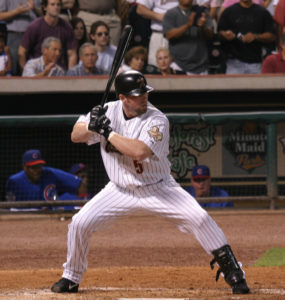
Jeff Bagwell – Like Mike Piazza, Bagwell is hurt for the most asinine of reasons – suspicion. People suspected he may have used steroids and that’s it. Despite the pitcher-friendly Astrodome and injuries, Bagwell belted 449 homeruns in under 10,000 PA, which is a pretty sweet accomplishment in its own right. He was a tick below Frank Thomas at the plate (.416 wOBA compared to .405) and The Big Hurt’s in the Hall where he belongs. Bagwell easily makes up the difference at the plate by being a better all-around player as a fielder and running the bases. Fortunately, there is very little reason to argue his case because after receiving 71.6% of the vote last year, he’s pretty much a guarantee to reach the needed 3/4’s of ballots.
Barry Bonds – Over the last 25 years, the Fangraphs’ WAR leaderboard lists Bonds at the top with 164.4 and Alex Rodriguez second. He only trails Bonds by 51.4 fWAR. Yes, we can talk about steroids and Balco, but this has gone on long enough. Bonds is the best player many of us will ever see (though Mike Trout makes a convincing argument). Just give him the votes and move on. Some have argued that Bud Selig’s selection to the Hall of Fame should put the steroid debate to bed. I may not agree with that completely, but it’s pretty foolish to praise the man who made baseball an even bigger global game while ignoring one of the players that truly made it happen.
Roger Clemens – Similar argument for Bonds. Clemens is one of the best handful of pitchers to ever play baseball. Yes, ever. In the history of the game, you would be hard pressed to name five pitchers who were, without argument, better than Clemens over their careers. The idea that The Rocket shouldn’t be in the Hall of Fame flies directly in the face of a pivotal part of the Hall’s mission statement to “honor excellence within the game.”
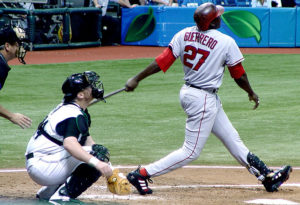
Vladimir Guerrero – Braves fans saw Vladimir Guerrero come onto the scene each time Atlanta visited Olympic Stadium in Montreal. He could hit any and everything. By the way, he hit just about every Braves pitcher except for Greg Maddux so Braves fans would be forgiven if they hated to see Vladdy come to the plate. Over a 16-year career, Guerrero hit .318/.379/.553. He never struck out 100 times, which really is astounding. He just missed out on joining the elite 40/40 club. While he was never renowned for his range in right field, very few players could match his arm. His at-bats were must-see TV even though he spent a good chunk of his career playing in Montreal, where hype goes to die. He followed that up by playing for Southern California’s other team. Had he spent his prime in New York City or Chicago, we’d be talking about Guerrero as a sure first ballot guy. Yes, some of his counting stats aren’t there and Guerrero isn’t a slamdunk candidate. He also lacks the postseason success that are the tipping point for so many other borderline figures. He wins my vote in the extracurriculars, though. The excitement he brought to baseball, the wildness to his approach at the plate, the consistency each season, and his excellence when compared to his peers are all undeniable. They are also why he should be in the Hall of Fame.
Edgar Martinez – The argument that Martinez should be held out because he was a DH was blown out of the water when voters overwhelming elected (and rightfully so) Frank Thomas last year. Thomas played over 300 more games as a DH than he did in the field. Now, the difference in games at DH compared to playing in the field is more stark with Martinez, but that also works in his favor in my opinion. DH used to be a position aging players played to stay in the lineup. With Martinez, the Mariners used him as a full-time DH early in his career. For 14 years, Martinez hit .317/.426/.531 as a full-time performer in the majors with 477 doubles and 295 homeruns. His success led to other managers having more respect for the DH position as more than a way to get people playing time or keep a defensive liability off the field. The writers should recognize trailblazers like Martinez – especially after failing to do so during his career. Martinez never finished higher than third in the MVP race despite spearheading a Mariners’ attack. While he certainly had help in Seattle, Martinez was the elite of the elite. During a seven-year period, from 1995 until 2001, Martinez never hit .305 or below, never on-based under .420, and hit 196 homeruns to go with 291 doubles. In three of those seven years, he received no votes for the MVP. It’s beyond time to make up for that wrong with a Hall of Fame selection.
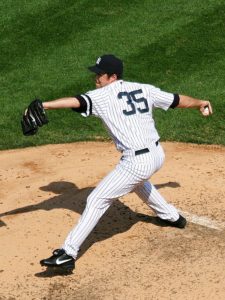
Mike Mussina – Fun fact: what pitcher ranks sixth in fWAR since 1975? Considering which name begins this blurb, that should be easy enough. Mussina was rarely the most noteworthy pitcher on his own staff. He did things quietly and effectively and ended his career with a 3.57 FIP over 3562.2 innings despite pitching the majority of his games in the bandboxes that are Camden Yards and Yankee Stadium during an era that brutalized pitchers. Typically, I want my selections to stand out and at first glance, maybe Mussina doesn’t do that for you with his zero Cy Young’s and five All-Star selections. I contend he deserved more praise and adoration – especially in 2001 when he finished with 6.9 fWAR and a 2.92 FIP, but lost the Cy Young to Clemens because the latter won 20 games. That probably had nothing to do with the extra 1.5 runs a game Clemens received in support.
Tim Raines – Since 1975, the top ten outfielders in fWAR include four Hall of Famers, two additional players who should be enshrined if it were not for steroid concerns, one active player in Carlos Beltran, one not-yet-eligible player in Andruw Jones, and a Canadian who will be at the bottom of my ballot (spoiler alert). The tenth outfielder is Raines, who ranks 8th. Tony Gwynn was a .338 hitter, but Raines was a much more valuable player with a similar wOBA (nine points difference), more homers, and speed that rivaled any of his peers. At this point, not electing Raines is just foolish considering other outfielders like Gwynn and Robin Yount didn’t have to suffer year-after-year of waiting to find out if they were elected.
Manny Ramirez – One of the best hitters any of us will ever see was also one of baseball’s strangest characters. Manny carries his own steroid issues, which will likely be used for justification as to why he should not be a first ballot guy. Twice, he failed drug tests and those failed drug tests nearly made me push him off my ballot. In the end, what kept him on my ballot was the numbers and his work since hanging up his cleats. Though he has his faults and quirks, Manny has been doing some nice PR work to his chances of getting into the Hall by getting into coaching with the Cubs and helping players like Javier Baez. In the end, Manny Ramirez hit .312/.411/.585 with 555 homeruns and eight consecutive Silver Sluggers. That’s good enough for me.
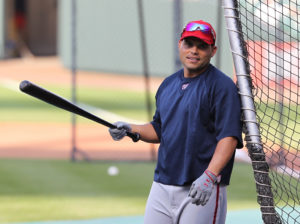
Ivan Rodriguez – The top catchers in fWAR over the last 25 years in order: Gary Carter, Rodriguez, Piazza, Carlton Fisk, Brian Downing (though he played more outfield than catcher). Now, two things should immediately come to mind. First, how quietly awesome was Downing? Second, if Rodriguez isn’t a first ballot selection, people really value Jose Canseco‘s recollections a lot. If you recall, in his manifesto Juiced, Canseco says that he personally injected Rodriguez with anabolic steroids during the time that he played with Rodriguez in Texas. That alone could prompt voters to hold Rodriguez out, which is a shame. Rodriguez was a game changer at the plate, but behind the plate, he was a monster. He controlled the other team’s running game and did all of the little things you preach to young catchers. Rodriguez was the AL’s answer to Piazza in the NL and both should now be in the Hall together.
Larry Walker – Since 1975, the top four outfielders in Fangraphs WAR are Barry Bonds, Rickey Henderson, Ken Griffey Jr., and Larry Walker. Yeah, he was that good. However, where as players like Bonds are hurt by steroid concerns, Walker is hurt by the fact that he spent a chunk of his career playing in Coors Field. Hence why, in his sixth year, Walker received just 15.5% of the vote. However, as Fangraphs’ Paul Swydan wrote, Walker’s case is just as, if not stronger than, Vladimir Guerrero’s. However, as Ryan Thibodaux’s Hall of Fame tracker shows as of December 20, of 74 ballots currently received (about 17%), Vladdy is on nearly 40 more ballots than Walker. Not mine, though. Both are deserving and should be in the Hall.
You can catch Tommy at his blog, walkoffwalk.net, or on Twitter @WalkOffWalk1.

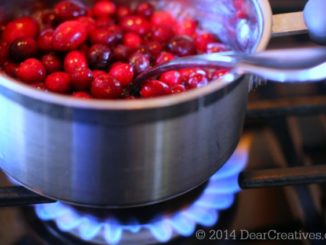
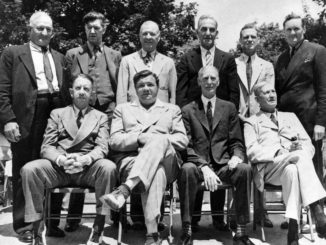
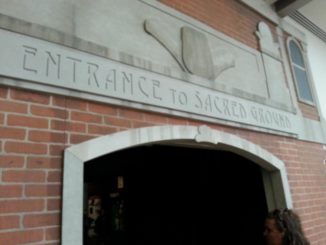
Leave a Reply